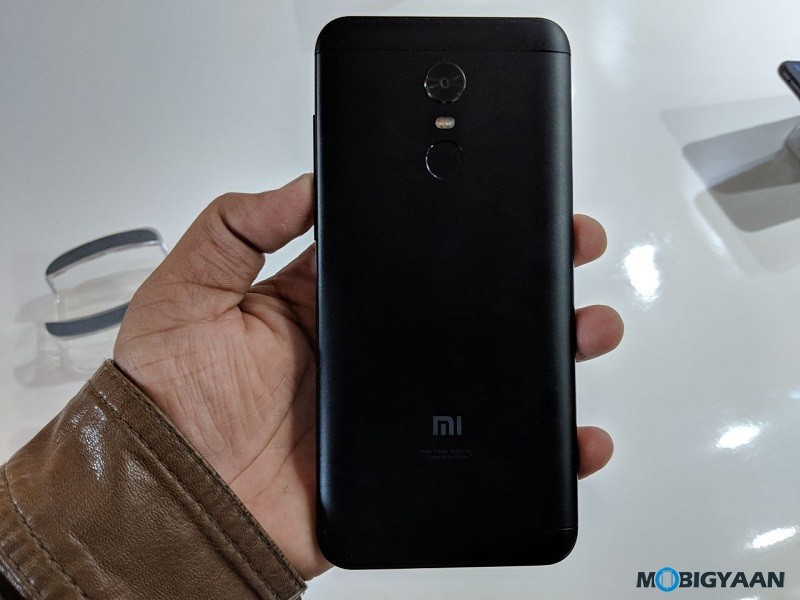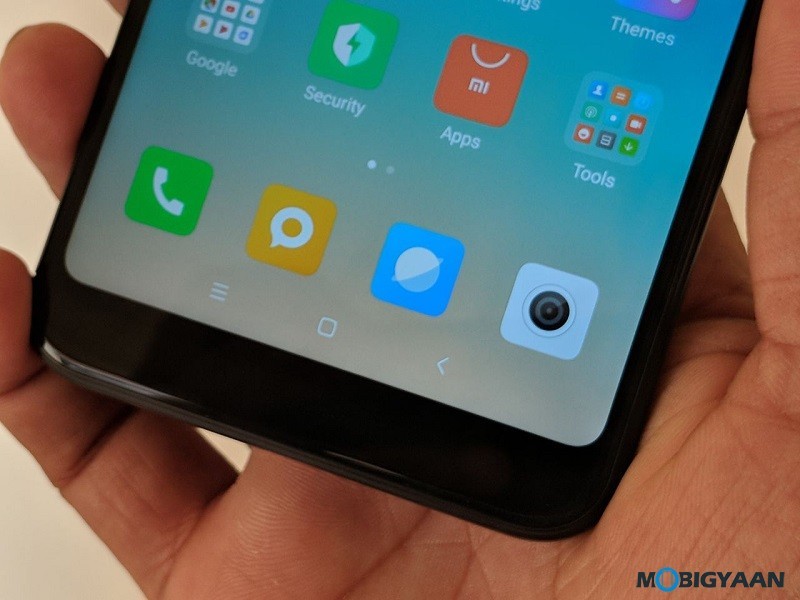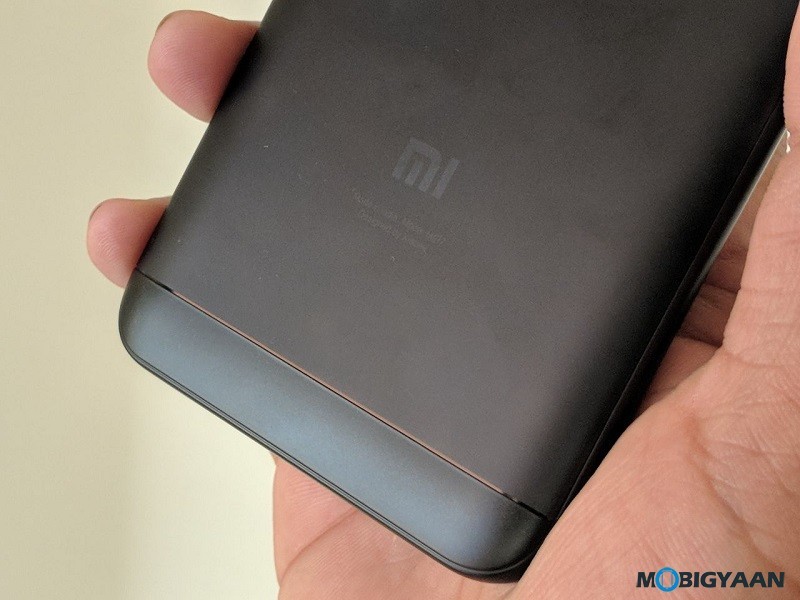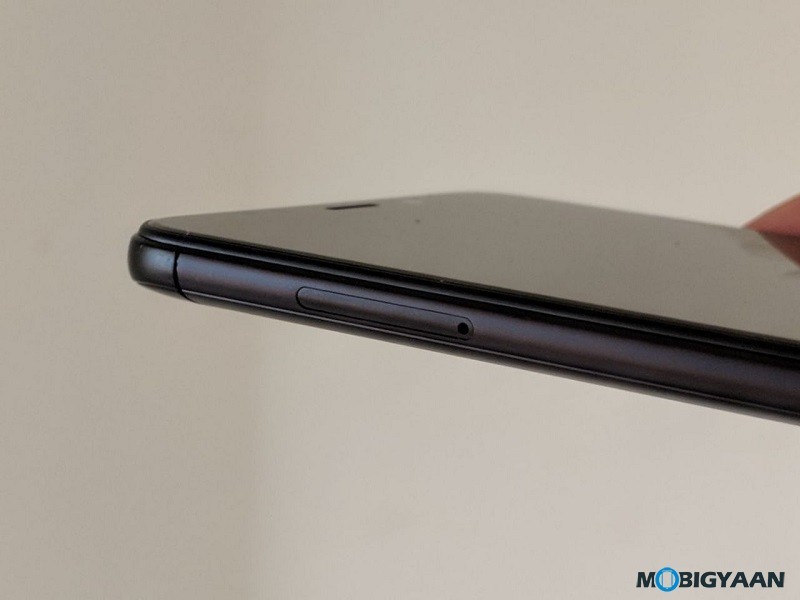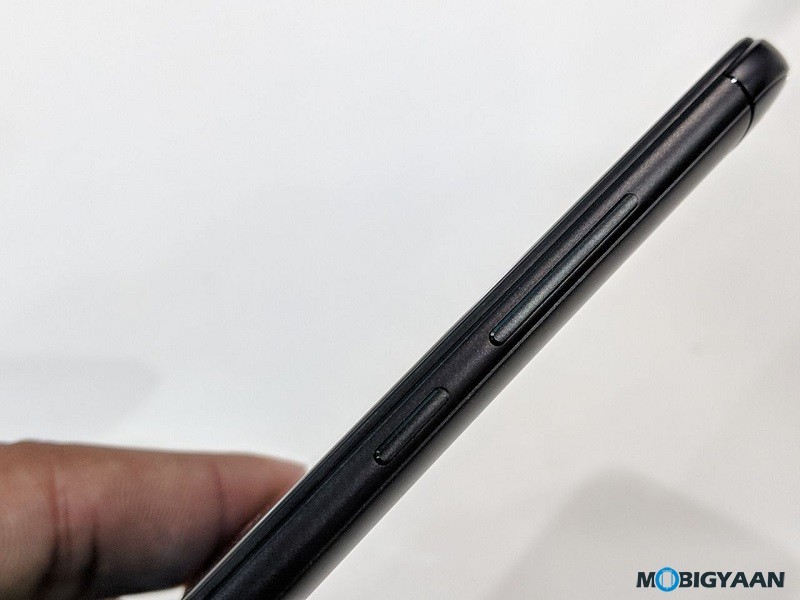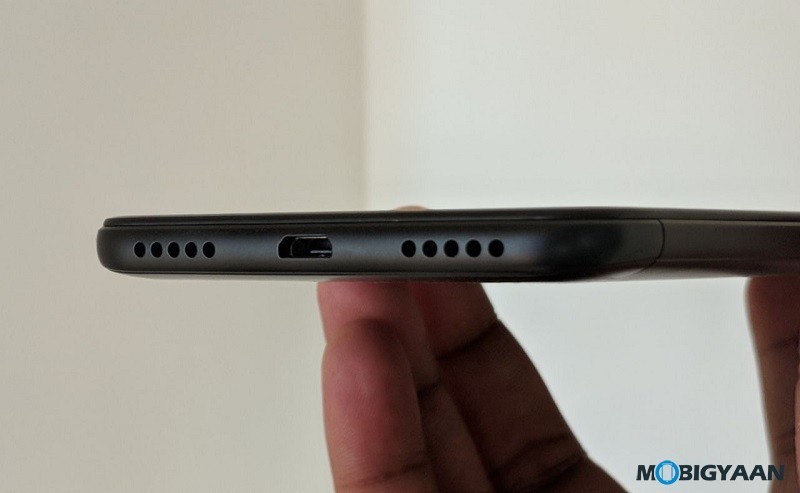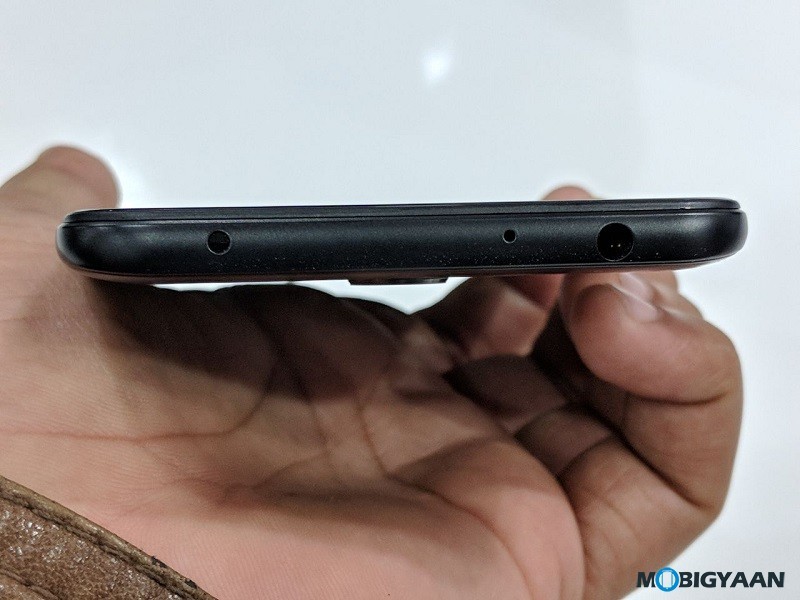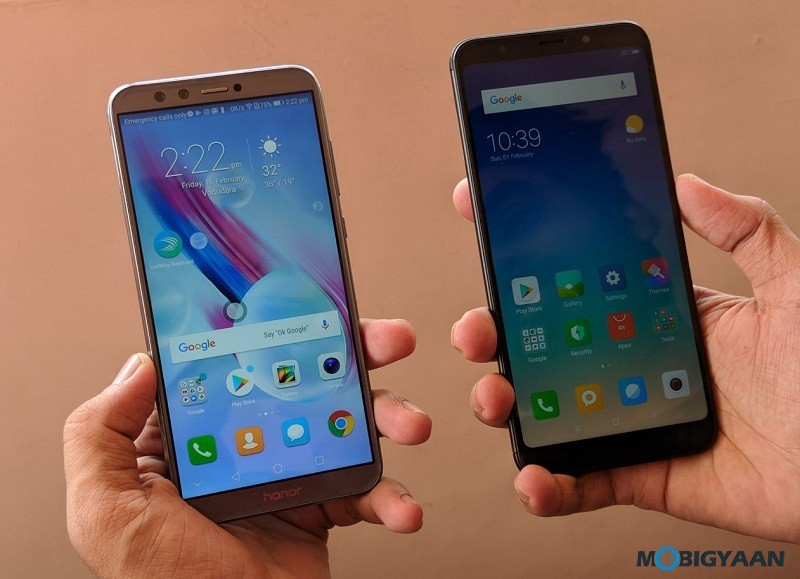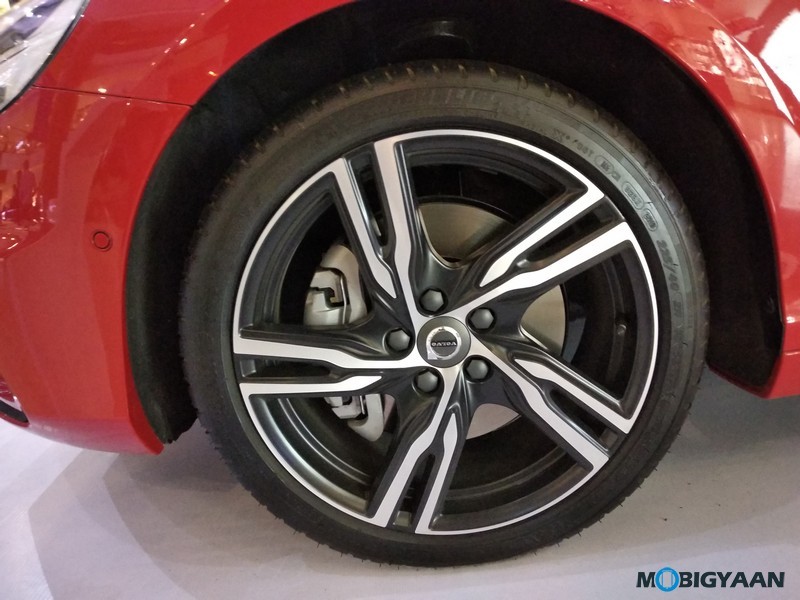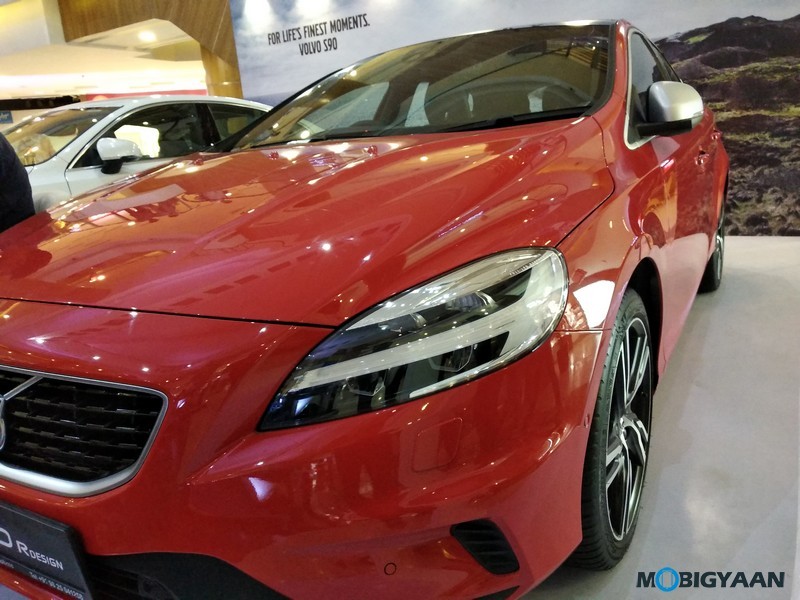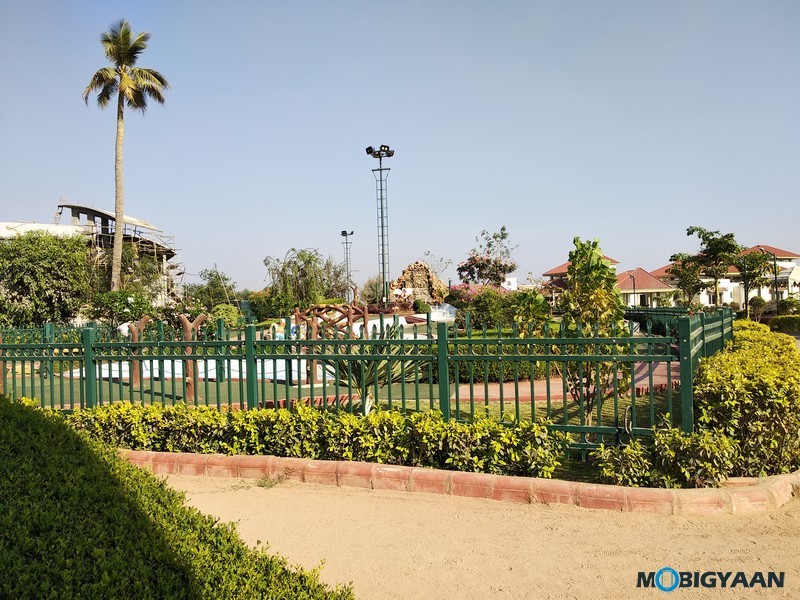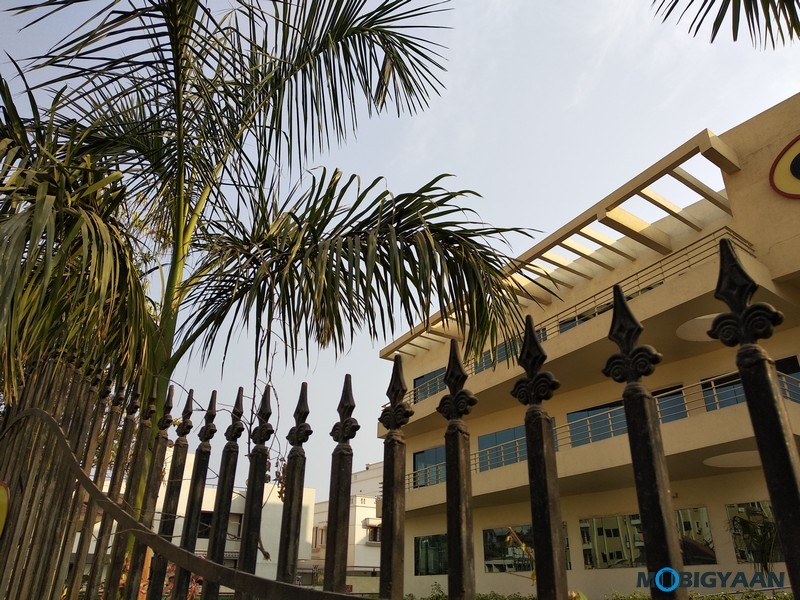Xiaomi’s 5th generation Redmi Note series has arrived with the FullView display knowing the current smartphone trends in the market. The Redmi Note 5 and Redmi Note 5 Pro are the two phones that offer larger displays. The Redmi Note 5 Pro is a new entrant while the Redmi Note 5, being the cheaper alternative, is the successor to the last year’s Redmi Note 4. The Redmi Note 5 seems to be a small upgrade which might feel that it’s the Redmi Note 4 with a larger display. Here’s our Redmi Note 5 review.
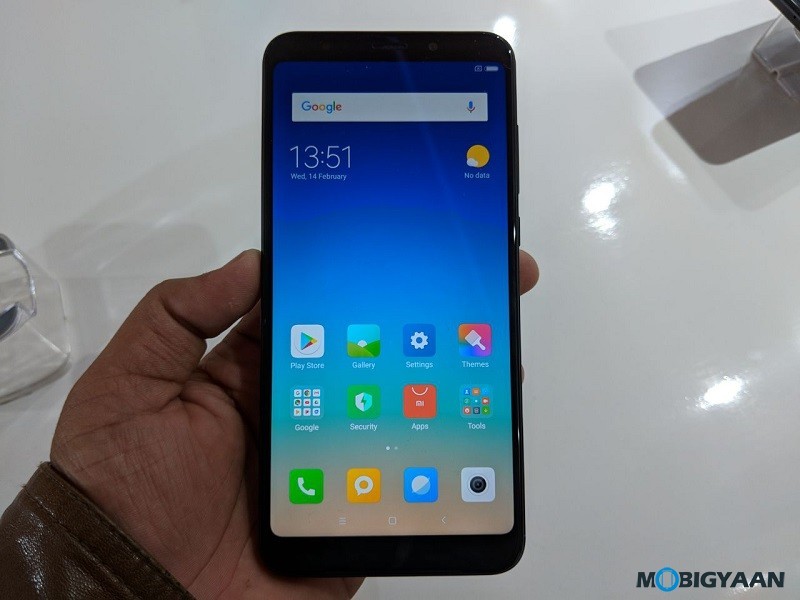
Xiaomi Redmi Note 5 Specifications
- Display: 5.99-inch IPS Display, Full HD+ Resolution (2160 x 1080 pixels), 2.5D curved Corning Gorilla Glass, 18:9 aspect ratio
- Software: MIUI 9 based on Android 7.1.2 Nougat
- Fingerprint Scanner: Yes, on the back
- CPU: Up to 2.0 GHz octa-core Cortex-A53 processor, Qualcomm Snapdragon 625 SoC
- GPU: Adreno 506
- RAM: 3 GB or 4 GB RAM
- Main Camera: 12 MP, 1.25 μm sensor, f/2.2 aperture, LED flash
- Selfie Camera: 5 MP, LED Selfie-light
- Storage: 32 GB (with 3 GB RAM), 64 GB (with 4 GB RAM), expandable via microSD card
- Cellular: 4G LTE network, 2x nano SIM, microSD on SIM2
- SAR Value: 0.751 W/kg (Head), 0.545 W/kg (Body)
- Connectivity: Micro USB port, 3.5 mm audio jack, IR Blaster, Wi-Fi, Bluetooth, GPS
- Colors: Black, Gold, Rose Gold, Lake Blue
- Battery: 4,000 mAh (5V/2A Charging)
- Price: Rs 9,999 (3 GB RAM, 32 GB Storage), Rs 11,999 (4 GB RAM, 64 GB Storage)
Design, Build, & Ergonomics
The Redmi Note 5 is large, with 5.99-inch FullView 18:9 screen, an ergonomic design, and a front LED selfie light is what we found to be something new on the phone.
The design is pretty much focused on the FullView display, the bezels are minimized, the corners are noticeably curved. The display turns out to be smaller than its previous generations, it looks bigger and better. Since the display is been extended, the bottom capacitive touch keys are eliminated.
The back uses a metallic design with tapered edges, we didn’t found much changes in the design aesthetics, it gives Redmi Note 4 at times at the back.
Nothing much has changed on the sides, Xiaomi continues to offer the usual micro USB port, not the type-C. The sides offer a power button and volume buttons on the right, hybrid SIM tray on the left, loudspeakers and a microphone at the bottom, and an IR Blaster at the top alongside 3.5 mm headphones port.
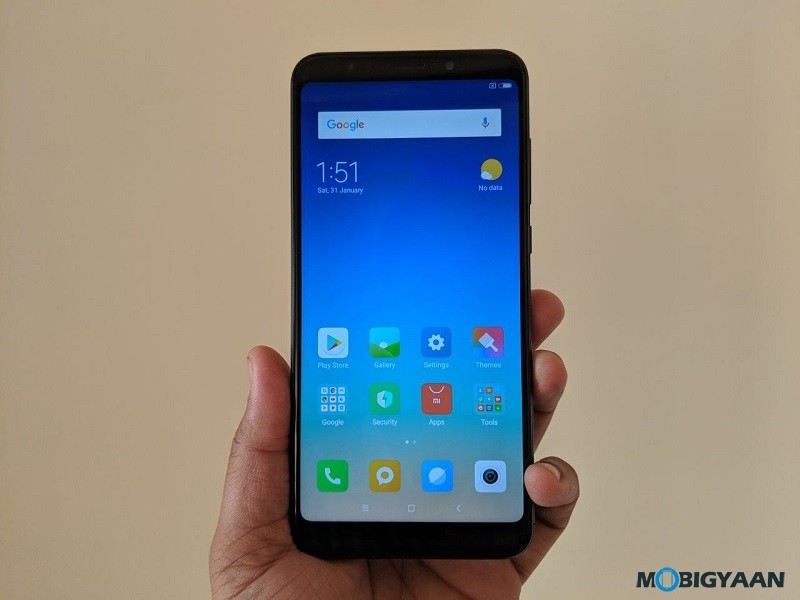
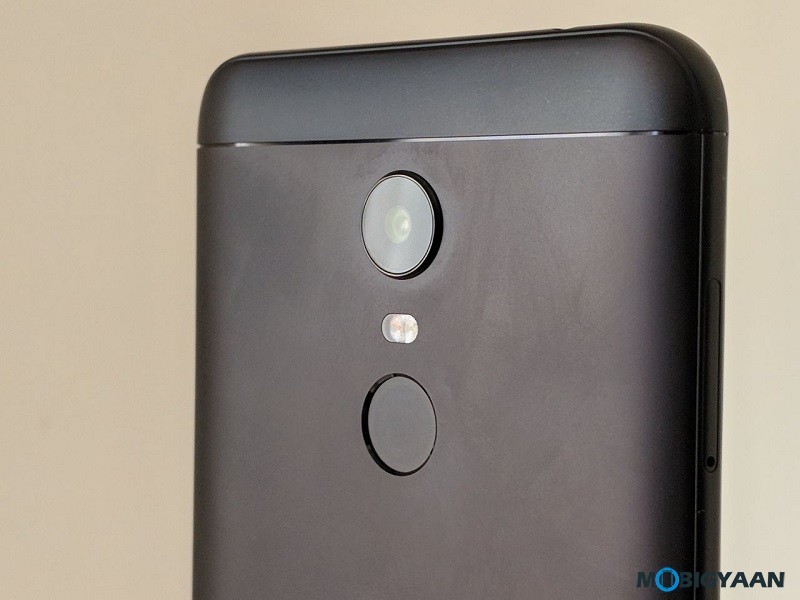
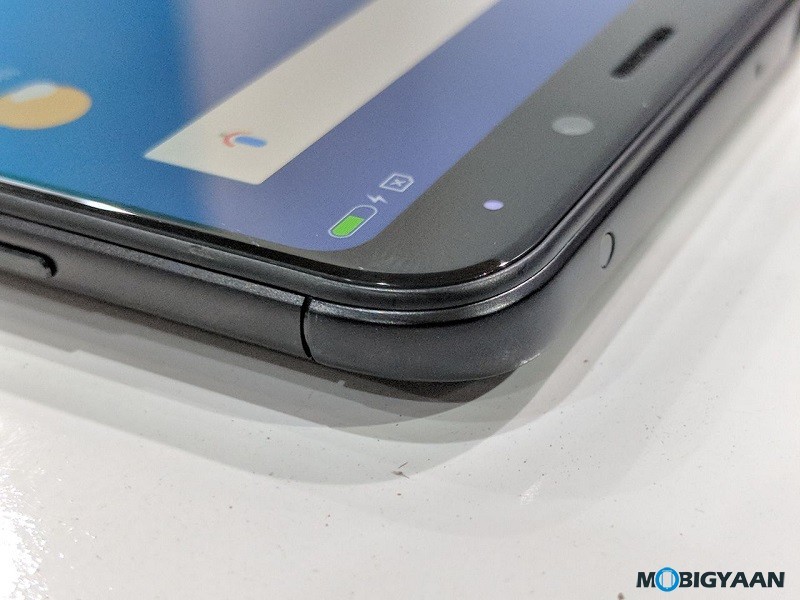
Display
One of the biggest changes in the phone is the display, the Full HD+ with 18:9 aspect ratio is new for the Redmi series, the Redmi Note 5 alongside the Redmi Note 5 Pro are the two first devices with the FullView display.
Xiaomi stretched the screen to 5.99-inch with a resolution of 2160 x 1080 pixels, slightly higher than mainstream 1080p displays. On top of it is a Corning Gorilla Glass that protects from scratches.
The screen is huge, thus viewing experience is great on the larger display. The Redmi Note 5 offers better viewing experience as compared to the Redmi Note 4, while the rest of the display perks continues to be similar.
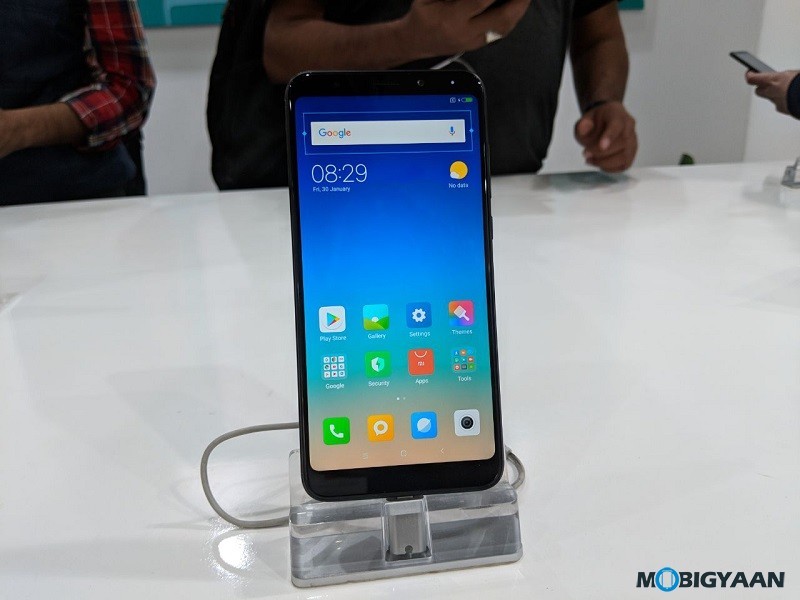
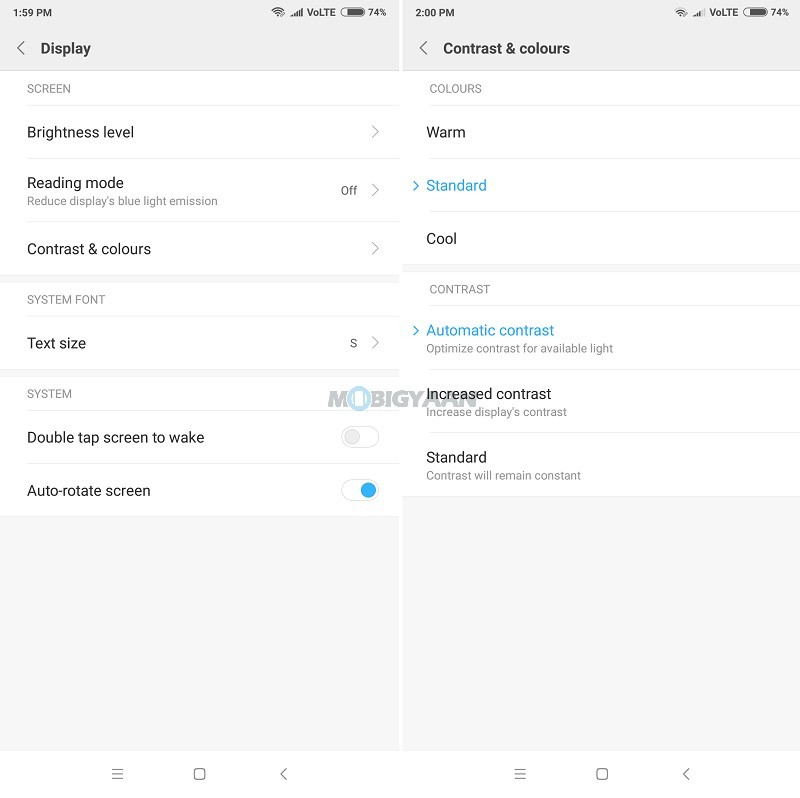
Software & User Interface
Android Oreo would add a greater benefit and standout in the competition. The Redmi Note 5 is still on the Android Nougat with MIUI 9.2 interface. It has a security patch from 5th December 2017.
People would expect Android Oreo out-of-the-box or at least an update sooner, but sadly, there’s no information when the update arrives. Assuming that the Redmi Note 4 received the Nougat lately, the Oreo update might not be seen anytime soon.
Since it’s not Oreo-based, several native features will be missing and who knows if MIUI may or may not include them after their first Oreo update. Talking about the OS, it’s fast, smooth, and filled with bloatware. To know more about the software, read our reviews of previous Redmi phones featuring Nougat.
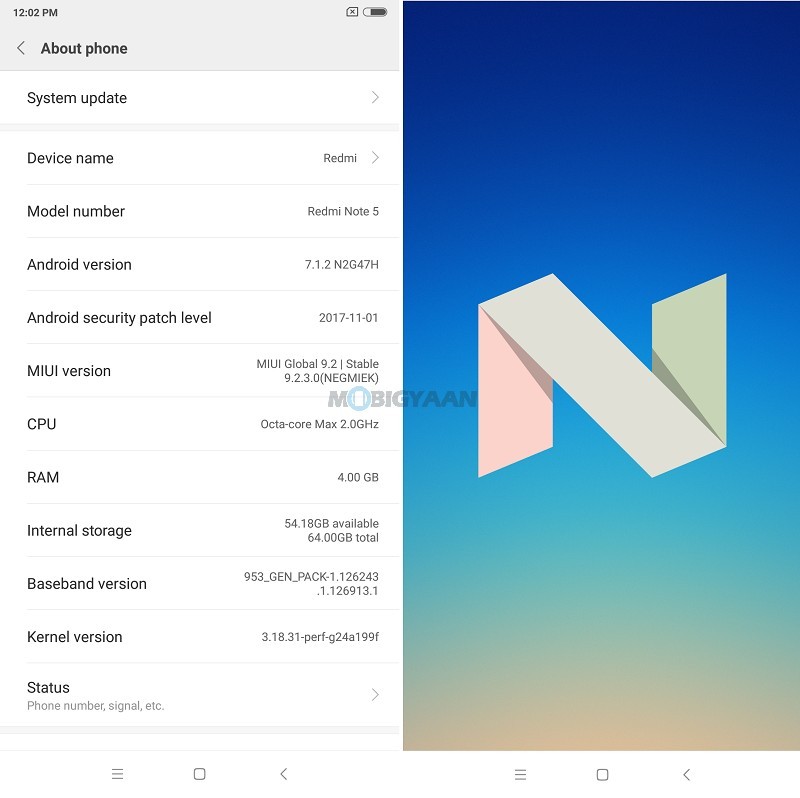
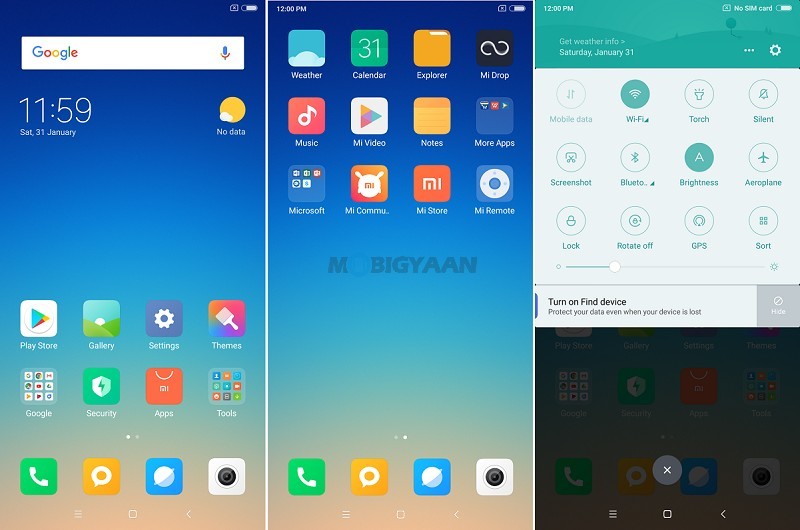
Hardware, Performance, & Gaming
Xiaomi continues the same chip found on its last generation, the Qualcomm Snapdragon 625 is still one of the best midrange CPU, however, with new phones started offering the upgraded chips (Snapdragon 636 on Redmi Note 5 Pro), you may find the Snapdragon 625 pretty stagnant for the year 2018.
As with the hardware, it’s backed with 4 GB RAM (top variant) patched with a 64 GB storage. In this price range, the hardware offered is not that bad.
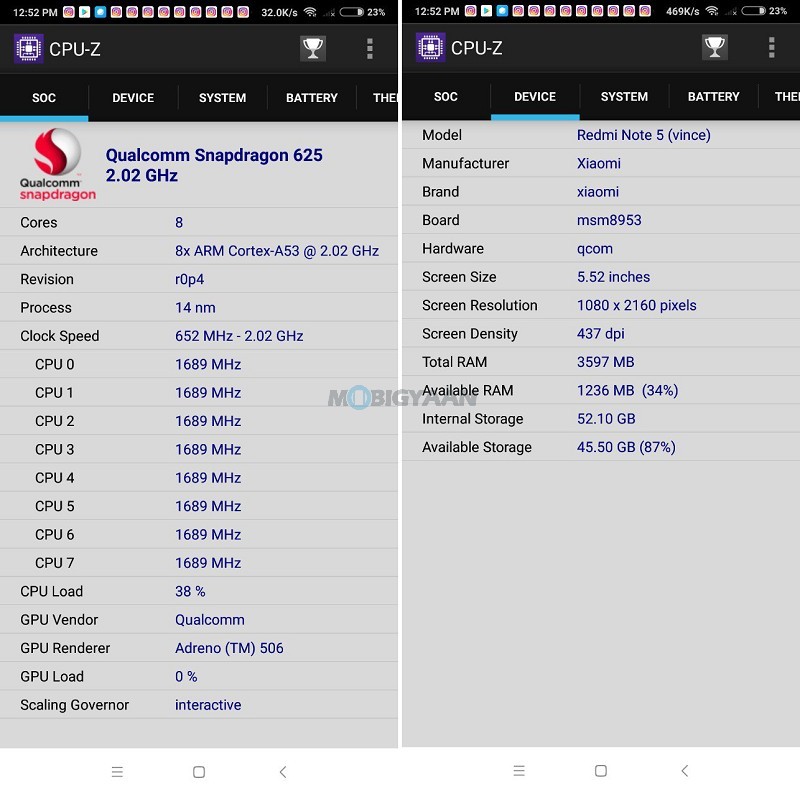
The benchmarks are fair, appears to be very identical to its predecessor, there’s really nothing much to talk about its performance, you can read our Redmi Note 4 review to know more.
On the gaming front, it runs many games with no problems, but as mentioned earlier, there won’t be any significant difference, the Redmi Note 5 Pro might be slightly better in terms of gaming performance (Adreno 509 GPU). Even the 2-year old Redmi Note 3 sounds off a better performer since it’s using Adreno 510 GPU versus the Adreno 505 on Redmi Note 4 as well as Redmi Note 5.
AnTuTu Benchmark
- 76,041 points
Geekbench 4
- 859 points (single-core CPU)
- 4,265 points (multi-core CPU)
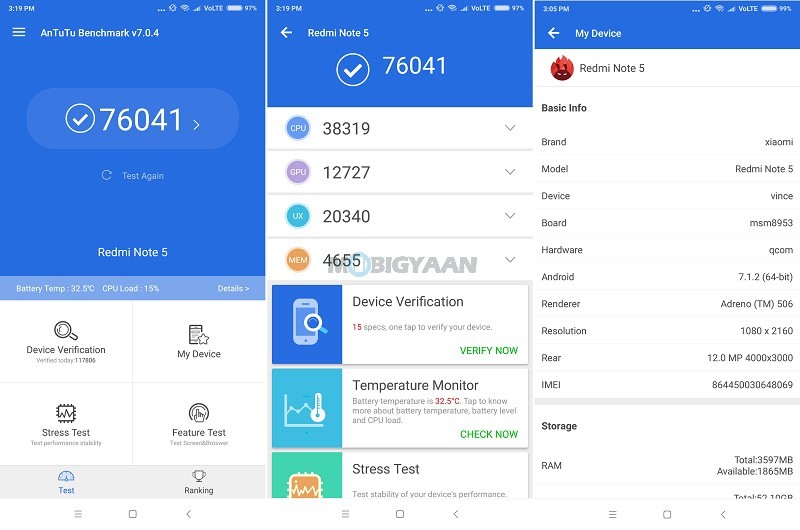
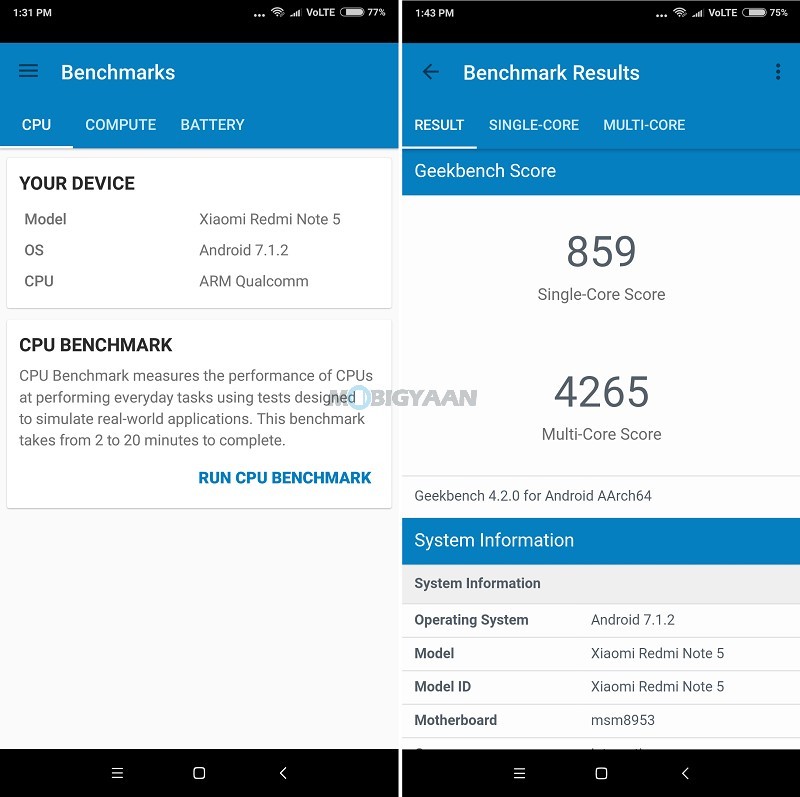
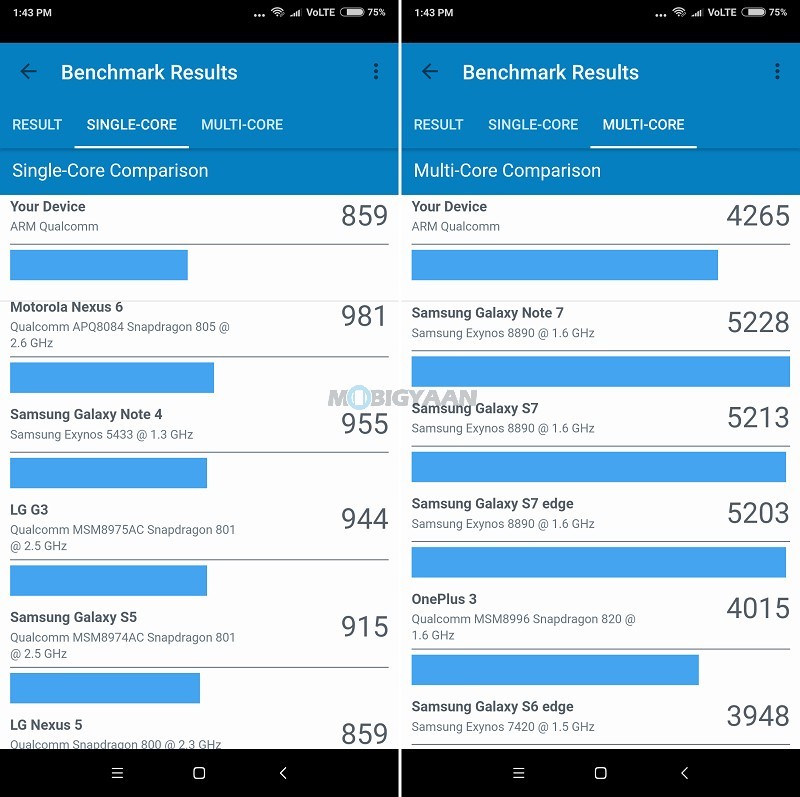
Cameras
The Redmi Note 5 has a 12 MP f/2.2 camera with larger 1.25 μm pixel size. The camera is slightly improved as compared to the predecessor, not significantly. The front side holds a mediocre 5 MP camera with LED selfie light.
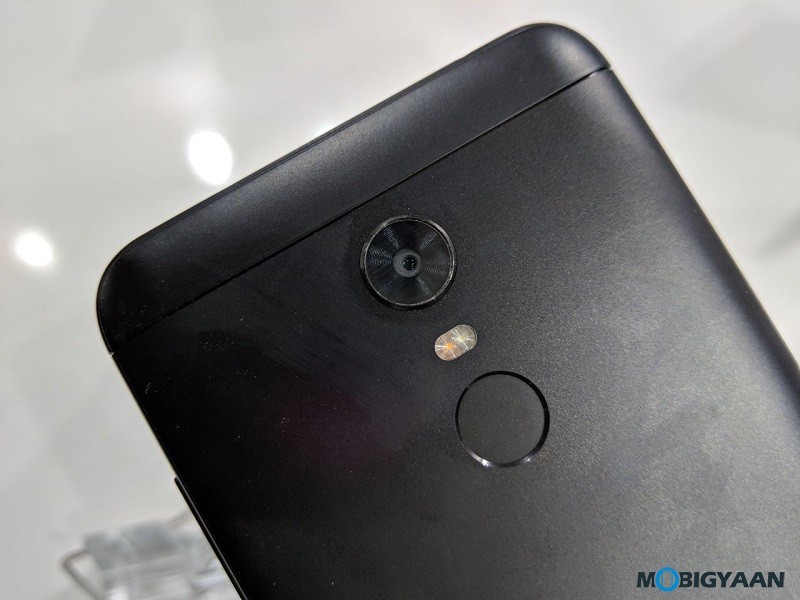
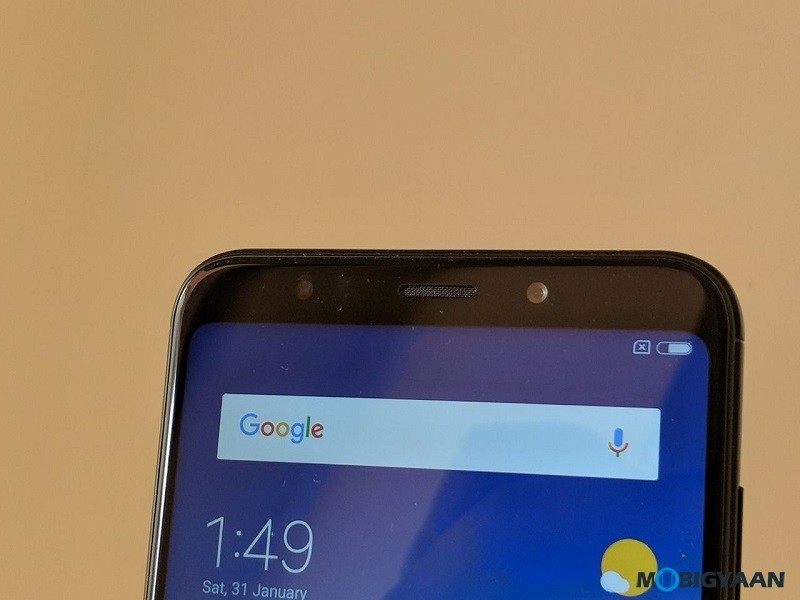
Xiaomi Redmi Note 5 Camera Specifications
- Camera: 12 MP, 1.25 μm sensor, f/2.2 aperture
- Image Sensor:
- Optical Image Stabilization (OIS): No
- Rear Flash: Dual-tone LED
- Features: Geo-tagging, Tap to Focus, HDR, Panorama, Manual, Straighten, Beautify, HTT (Night Mode), Scene, Tilt-shift, Timer, Audio, Color Filters, Burst Shot, Face Detection, Age & gender, QR code scanner, Time-lapse, Slow-motion, 4K Video
- Video Recording: 4K video @30fps, 1080p video @30fps, 720p video @120fps
- Front Camera: 5 MP
- Video Recording: 1080p video @30fps
- Front Flash: Single LED
There’s no Portrait mode or Bokeh mode features available. You will find the usual camera features provided in the Xiaomi camera app.
The camera does snap good images in the daylight, however, the HDR mode adds better colors and makes the image look vivid. Low light shots aren’t that great, they get blurred and noise can be seen. Honor 9 Lite, on the contrary, emerges with a better low-light camera.
The front camera takes average selfies, either Redmi Note 5 Pro with 20 MP front camera or the Honor 9 Lite with dual selfie cameras (13 MP + 2 MP) performs far better in the segment.
The video recording is now upgraded to 4K with 30 frames per second. It also captures 120fps slow motion which we already saw on the Redmi Note 4.
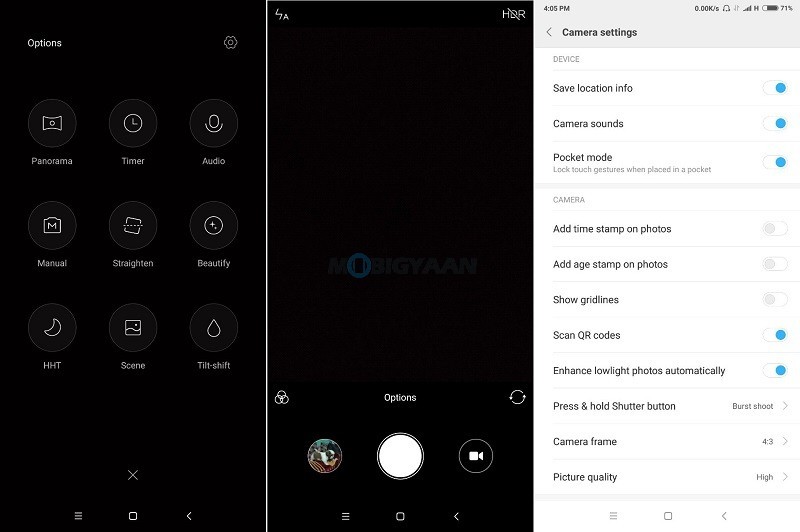
Xiaomi Redmi Note 5 Camera Samples
Battery Runtime & Charging
One of the best things at this price point is its battery life, Xiaomi has optimized the MIUI 9.2 for longer battery run. The Redmi Note 5 packs a 4,000 mAh battery that gets through easily a day on a single charge with about half of the battery power left. It even goes beyond 2 days depending on your usage. It’s one of the best phones when it comes to the battery.
Charging takes time, you could spend two or more hours charging it fully, Xiaomi could have provided a fast charging option.
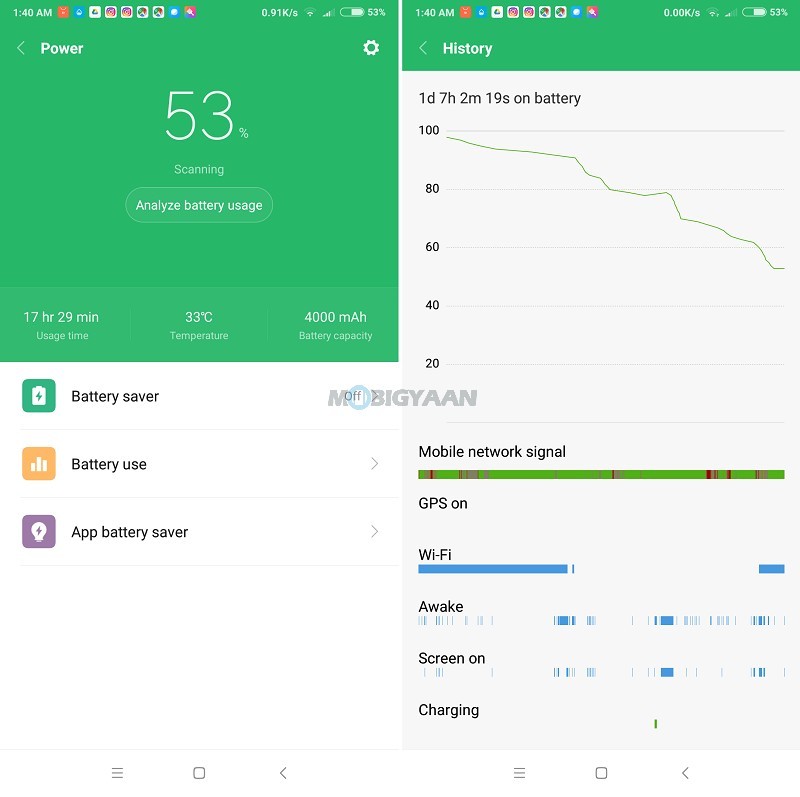
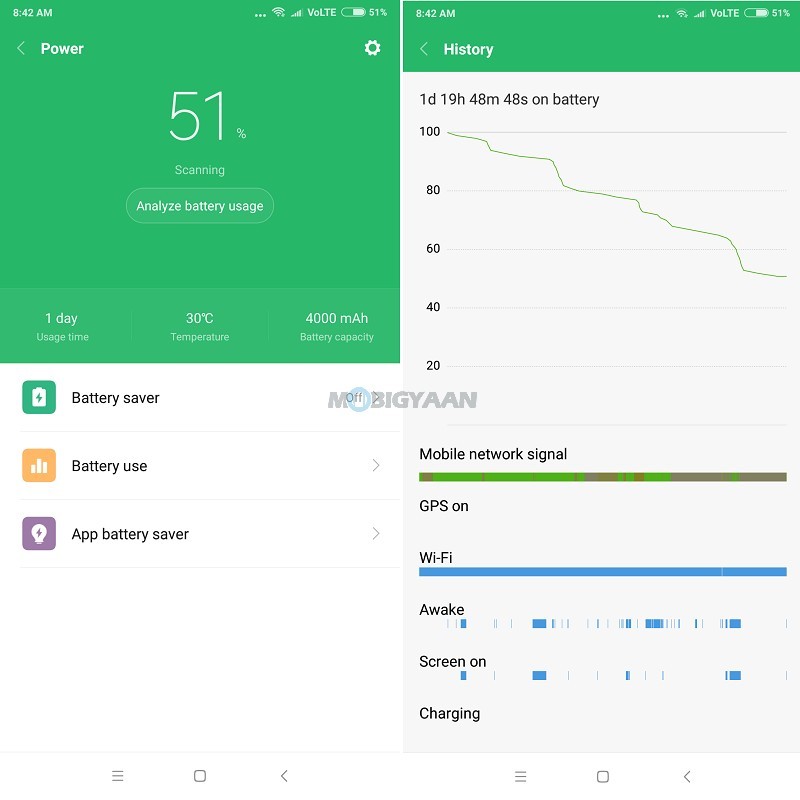
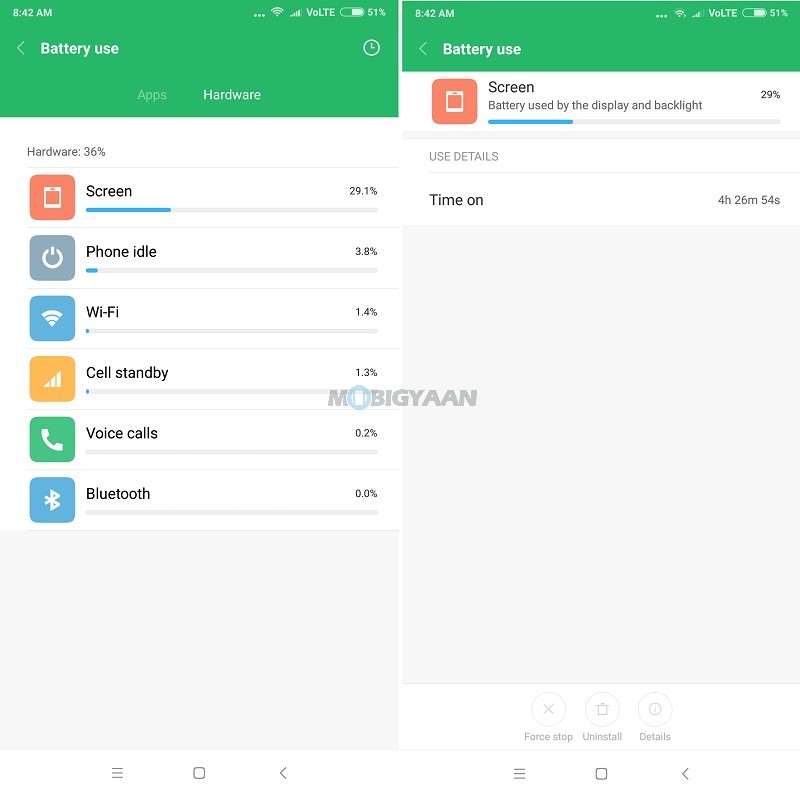
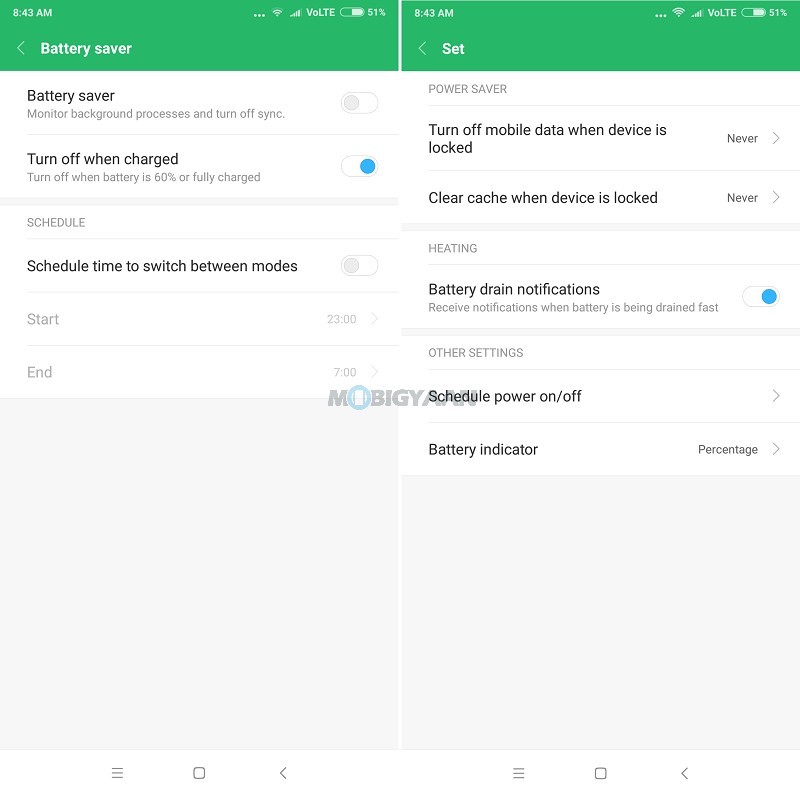
Verdict
If you are a Redmi Note 4 owner, the Redmi Note 5 would be a nominal upgrade, you will fancy the new 18:9 display, the other aspects are identical to the predecessor. It seems Xiaomi wanted to cater for its higher variant Redmi Note 5 Pro, Rupees 2,000 more and you get a dual-camera powerhouse with a great selfie camera. Upgrading your Redmi Note 4 to Redmi Note 5 Pro is rather essential.
Nevertheless, the Redmi Note 5 is still the budget contender in the segment. If you need a featured camera phone and Android Oreo, Honor 9 Lite is a what you need to look for.
Rivals
- Honor 9 Lite (32 GB) – Rs 10,999
Strength
- Large Display
- Metallic Build
- Great Battery Life
- Camera Records 4K Videos
- MicroSD Support
- Value For Money
Weakness
- No Oreo out-of-the-box
- Needs Fast Charging

